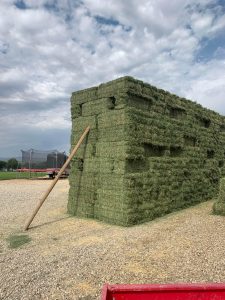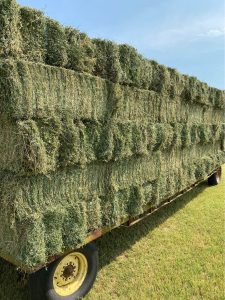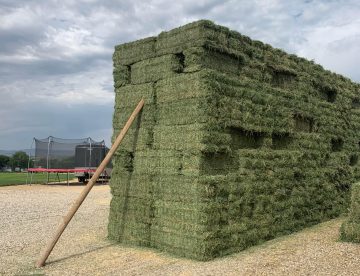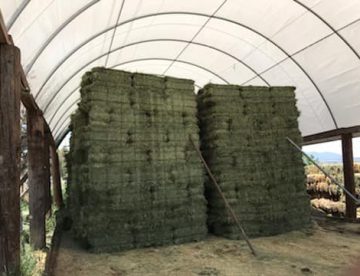Harvest Management for High Quality Alfalfa Hay
Title: Optimize Your Alfalfa Harvest: A Comprehensive Guide to Forage Yield, Quality, and Stand Persistence

Introduction:
Unlock the full potential of your forage crops with a strategic harvest management program that considers forage yield, quality, and stand persistence. In this guide, we delve into the crucial factors that impact your harvest, including the timing of harvest, maturity stage, and effective harvest strategies. Learn how to produce high-quality alfalfa hay that not only enhances animal performance but also boosts farm profits.
Section 1: Forage Yield, Quality, and Stand Persistence
Understand the intricate relationship between forage yield, quality, and stand persistence to maximize the benefits from your forage crops. Discover how the maturity stage at harvest plays a pivotal role in determining forage quality and why it’s crucial for optimal animal performance.
Section 2: Harvest Management Strategies
Explore different harvest management strategies for alfalfa, whether your goal is high quality, high yield and quality, or maximum persistence. Learn about the impact of the first cutting stage on stand persistence and the optimal intervals between subsequent cuttings. Find out how planting a variety of high-quality alfalfa types can help extend the harvest period while maintaining forage quality.
Section 3: Harvest Process and Environmental Considerations
Uncover the influence of harvest processes and environmental conditions on alfalfa yield and quality. Learn key techniques to minimize leaf loss during the drying process, including the use of mower-conditioners and proper cutting times. Understand how respiration, rain damage, and wet weather can affect the haymaking process and implement strategies to mitigate these challenges.

Section 4: Alfalfa Cutting Height and Drying Tips
Gain insights into the importance of cutting height for maximizing yield and promoting winter survival. Discover recommended cutting heights for different field conditions and learn how to improve drying by avoiding deep windrows and utilizing wide, thin windrows for better aeration.
Section 5: Raking, Inverting, and Bale Moisture Levels
Learn about the impact of raking and inverting on leaf loss during the haymaking process and why it’s essential to keep these processes to a minimum. Understand the recommended bale moisture levels for alfalfa storage, considering factors such as bale density and weather conditions.
Section 6: Speeding up Drying and Preservative Use
Discover practical tips for speeding up the drying process, from well-adjusted mower conditioners to the timing of hay cutting. Explore the use of hay drying agents and desiccants to enhance drying rates, along with the benefits and considerations of hay preservatives in preventing mold and heat damage.
Section 7: Bale Wrapping and Alternative Harvesting Methods
Explore alternative methods such as bale wrapping for harvesting at higher moisture levels and preventing mold development. Understand the benefits and limitations of using bale wrapping and how it compares to traditional preservative methods.
Conclusion:
Equip yourself with the knowledge and strategies needed to optimize your alfalfa harvest. By understanding the interplay between forage yield, quality, and stand persistence, implementing effective harvest management practices, and utilizing advanced techniques for drying and preservation, you can elevate your haymaking process to produce high-quality alfalfa that enhances animal production and maximizes farm profits.
source : dghb2b.com
Harvest Management for High Quality Alfalfa Hay


